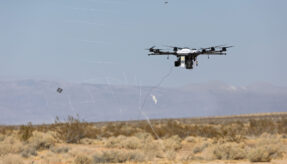
The sophisticated communications technology of Lockheed Martin, the global aerospace, defence, security and advanced technologies company, is being used by the US National Science Foundation (NSF) to provide an outside link from its remote research station at the South Pole.
A Lockheed Martin-built satellite within the Defense Satellite Communications System (DSCS) is supporting the NSF’s Amundsen-Scott Station in this remote, inhospitable part of the world.
Amundsen-Scott Station’s location at 90 degrees south, right at the South Pole, makes communications with the remote science station difficult. Even for orbiting satellites, the extreme geographic latitude makes maintaining continuous communication links impossible for the station, which houses up to 100 researchers.
However, with few other options, periodic connections are still better than none, but the time to upload and download valuable research data and other communications is invaluable.
Recently, a US Air Force DSCS III B7 satellite took over the role of providing communication and data links between Amundsen-Scott and the US Antarctic Program facility in Christchurch, New Zealand, which serves as the station’s link to the rest of the world.
The Lockheed Martin satellite replaces the NSF’s decommissioning GOES-3 satellite, and will provide the station with internet access for 3.5 hours a day at speeds of up to 30MBPS, an upgrade from the 1.5MBPS available under GOES. DSCS III B7 has already begun relaying health and welfare data links to and from the remote facility.
Originally built by Lockheed Martin and launched on 31 July 1995 with a ten-year design life, DSCS III B7 builds on the constellation’s reputation for providing extended service life.
“The DSCS constellation has been a legacy workhorse for the US military’s super-high frequency communications,” said Chris Ayres, Director of Operations, Sustainment and Logistics at Lockheed Martin Space Systems. “Now operating past twice its design life, it is gratifying to see DSCS III B7 still delivering value, providing significant return on investment by furthering scientific research and providing potentially life-saving communications with a location that is otherwise unreachable.”
IMAGE: Amundsen-Scott South Pole Station, Antarctica © Calee Allen, NSF
If you would like to join our community and read more articles like this then please click here
Mark Lane is a defence writer for defenceonline.co.uk and the MoD’s Defence Contracts Bulletin. He is also editor of Global Trader, sub-editor of Insider Scotland and a former editor of Business Today.
Communication & Intelligence International Lockheed Martin South Pole US Air Force








